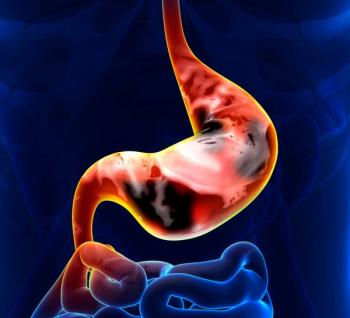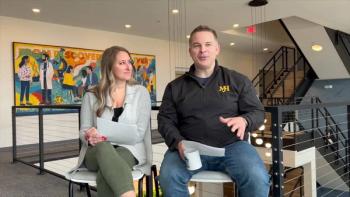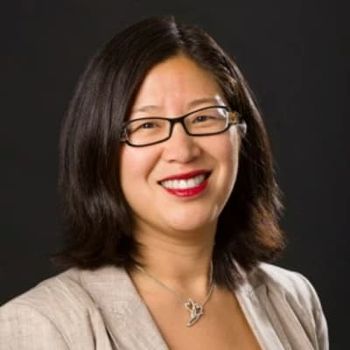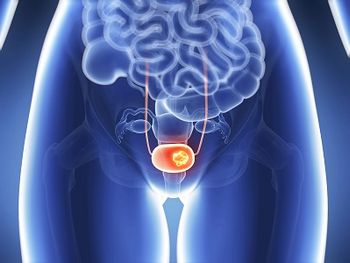
Phase 2 ZUMA-5 Study Results Show Promise for Axi-Cel in Indolent Non-Hodgkin Lymphoma
Results from the phase 2 ZUMA-5 study indicated that axicabtagene ciloleucel (axi-cel) may be a promising approach for treating this patient population.
In an interview with CancerNetwork®, Caron A. Jacobson, MD, of the Dana-Farber Cancer Institute, discussed the interim analysis of the phase 2 ZUMA-5 study, which suggested that axicabtagene ciloleucel (axi-cel) demonstrated significant and durable clinical benefit in patients with relapsed or refractory indolent non-Hodgkin lymphoma.
The study findings, presented at the 2020 American Society of Clinical Oncology (ASCO) Virtual Scientific Program, indicated that axi-cel may be a promising approach for treating this patient population.
CancerNetwork®: Could you explain the study design for the phase 2 ZUMA-5 study?
Jacobson: So, this is an open-label, phase 2 study where all patients were treated the same way. And that treatment was with a CD-19 directed CAR T-cell therapy called axicabtagene ciloleucel, which has been FDA approved for aggressive B-cell non-Hodgkin lymphomas, but this is the first time it was tested in some of the slower growing lymphomas. So, in particular, patients were eligible if they had follicular lymphoma or marginal zone lymphoma, and they had to have relapsed after 2 or more lines of therapy. So, this was third line and beyond. And so, all patients who were enrolled in this study had their cells collected and then manufactured and then had their cells reinfused after 3 days of lympho-depleting chemotherapy, and then were monitored for toxicity and efficacy.
What were the key findings from the study?
So, in total 125 patients with follicular lymphoma were in enrolled and treated, and 16 patients with marginal zone lymphoma were enrolled and treated. The way this study was designed is that the first 80 patients with follicular lymphoma who reached 9-month follow-up would be included for efficacy analysis. But all patients treated were included in the safety analysis. The marginal zone lymphoma cohort was more of an exploratory cohort, there was no formal hypothesis being tested, but just to, you know, any findings would be more descriptive in nature. And so, we placed focus on that sort of efficacy cohort for follicular lymphoma since that was really the principal patient population for the primary endpoints of the study which was the overall response rate. The overall response rate was 95% in that group of patients and 81% of patients had a complete response to therapy. And those patients were then followed for some time, and the median follow up for that cohort was 15.3 months. And other patients who had had a complete response of those 81% of patients who had a complete response, 80% of them maintain that complete response at that median follow up time.
So, it did appear that some, that many of these complete responses were durable out past at least now a year; we need longer follow up. The marginal zone lymphoma cohort had similarly high response rates and high [complete response; CR] rates. Although if you look at the absolute numbers in the in the presentation, they're a little bit lower than what we saw with follicular lymphoma, which actually probably isn't, doesn't reflect the activity in marginal zone lymphoma. It's an artifact of the fact that 19% of the marginal zone lymphoma patients that were enrolled in the study when an independent central radiology review looked at their pretreatment scans, they found that they didn't have what we call measurable disease. So, there are lots of ways that people's lymphomas can relapse that may not necessarily be measurable. So, the sites that put the patients on felt that they had measurable disease, but it was sort of overruled in central radiology review. And so that caused the numbers to go down. So, the overall response rate was closer to the 80s and the CR rate was closer to the 70s for that cohort, so they had very short follow up. So, the it's very hard to say anything about durability of response in that group.
And then the most important next thing to look at is looking at the safety. So, we know CAR T-cells have a unique safety profile and for these slow growing diseases, where they have very long natural history, safety is really incredibly important. And so, on a whole, the safety looked very similar to what we had seen in other studies. But when you sort of looked at the follicular lymphoma patients in particular, and then the marginal zone lymphoma patients separately, you can see that in the follicular lymphoma patients, the safety profile actually looks more favorable compared to what we're used to seeing with axi-cel. So actually, 23% of patients had no cytokine release syndrome (CRS) whatsoever. It was 95 plus with large cell lymphoma and the axi-cel, and that means that 19 to 23% of patients didn't even have a fever. And then in terms of patients who have high grade cytokine release syndrome, that it was actually only 7% compared to 16% with axi-cel in large cell lymphoma. And then in terms of high-grade neurologic toxicity, which is the other toxicity we worry about, the rates of high-grade neurologic toxicity were also lower by about 50%. So, they were about 15% compared to 30 plus percent with large cell lymphoma. And I think one of the other more interesting aspects was just that the cytokine release syndrome started later in these patients. So, whereas you can see it within day 1 and day 2, when large cell lymphoma patients are treated with axi-cel, the median time to onset was 4 days. So, the fact that 23% of people didn't even have a fever, and it took for those who did, it took 4 on average 4 days to develop, you could actually start to think about for follicular lymphoma patients dosing this outpatient. Within the marginal zone lymphoma cohort, the toxicity was likewise delayed. So, onset usually started around day 4, but the numbers of high, you know, the numbers of patients who had a fever and the number of patients who had high grade CRS or neurotoxicity, more closely resembled what we saw with axi-cel and large cell lymphoma.
What would you say are the overall implications of these findings?
So, this was a heavily pretreated population of patients so, on average, patients had had 3 or more lines of therapy. So really, this was fourth line for most patients. But we know that once we hit sort of third line and beyond the available options for follicular lymphoma and marginal zone lymphoma, once you hit third line and beyond, that's when the remission durations start to get shorter and shorter. And so, the number of CRs are generally lower, and the patients are expected to relapse before a year of that line of therapy. So, the fact that we saw so many complete responses and that so many are ongoing past a year is already an improvement for patients in this line of therapy. You know, not every follicular lymphoma patient will get to a third line of therapy. Many patients have this disease for 20 or 30 years; they can be observed for a while, they may only need 1 or 2 lines of therapy in their lifetime, but for that group of patients who gets to the point of needing a third line, we do need treatments that can give more durable responses. So, I think that's, that's what we can say, right? That's what we can say right now, I think we need longer follow up in this disease, because this is a disease that is known to respond for multiple years to a therapy and has a high risk of relapse. So, and these relapses can happen late. But and what that really means is that this, with conventional therapies, these are incurable diseases. And so, it may very well be true that these patients and ongoing response at this point, you know, are at risk of relapsing as time goes on. But if they don't, then we've just discovered a therapy that could turn an incurable disease into a curable disease for a subset of patients, which would be remarkable.
For patients who may not understand medical jargon, how would you explain the key highlights of the study?
So, I would say that this is a one-time therapy that has a very, very high response rate, meaning that patients’ disease gets better after the single infusion of these CAR T-cells, with over 80% of patients actually entering remission and, we need more time to follow these patients, but with the, you know, with follow up now out to 15.3 months, a lot of these remissions seem to be durable and lasting. And we hope that that translates into people living longer and even potentially being cured of their disease. And on the flip side of that, we worry about safety. Obviously, whenever we're testing a new therapy and the safety profile appears to be manageable and reversible and self-limited… So, you know, it's a win-win.
So, what are the next steps for the study?
So, I think most importantly is the longer follow up, right? We need to follow these patients over time and understand if they… how long these remissions will really last for. And, so that for this study in particular, that's the most important. Now the marginal zone lymphoma cohort is still enrolling. And so, we will obviously get more data and more mature data for this group because this is really very preliminary data for that group. I think what we have, what we need to see from this study, is if these responses are durable, and we're not seeing relapses years after therapy, about whether this is something we can move up to an earlier line of therapy for patients. You know, whether it's acceptably safe and provides lasting benefit for patients that it makes sense to move it up into earlier lines of therapy. One particular group that might make sense to test in is a group of patients who progress early after their first line of therapy. So, people who have… patients who progress within 12 to 24 months of their first line of therapy overall have a generally a worse prognosis than patients who have a longer remission. And so, you may want to highlight those patients for maybe testing this in the second line and seeing if it's safe and makes sense to move up into an earlier line of therapy.
Newsletter
Stay up to date on recent advances in the multidisciplinary approach to cancer.


















































































